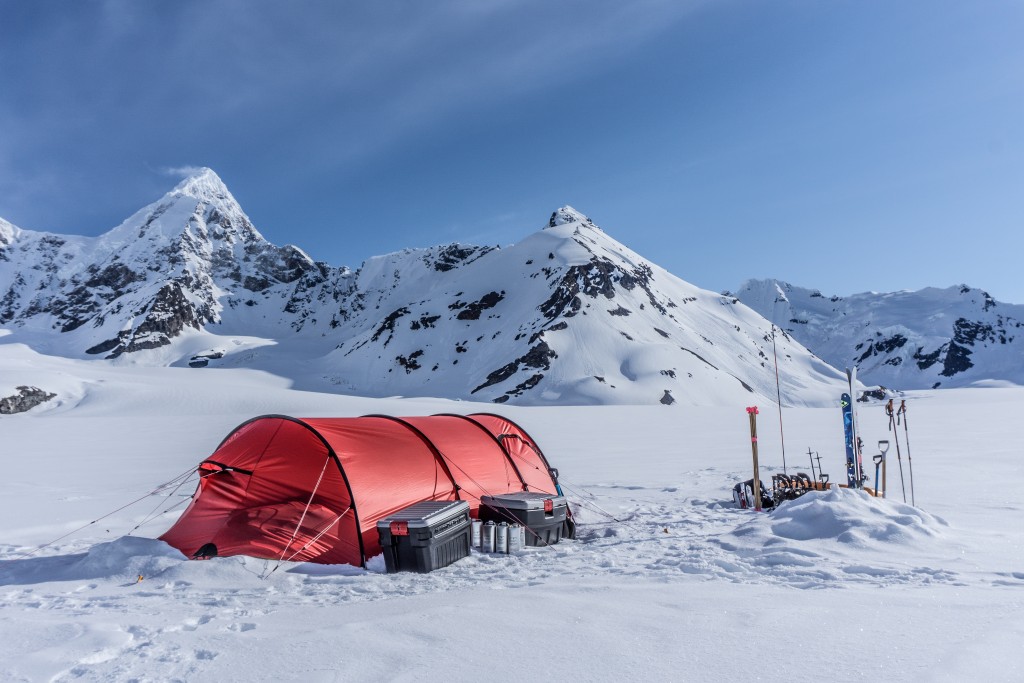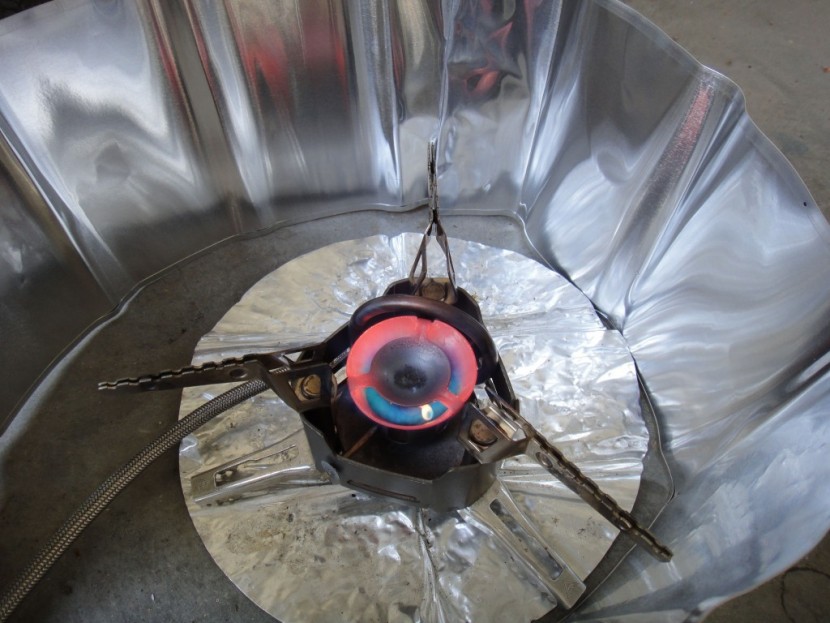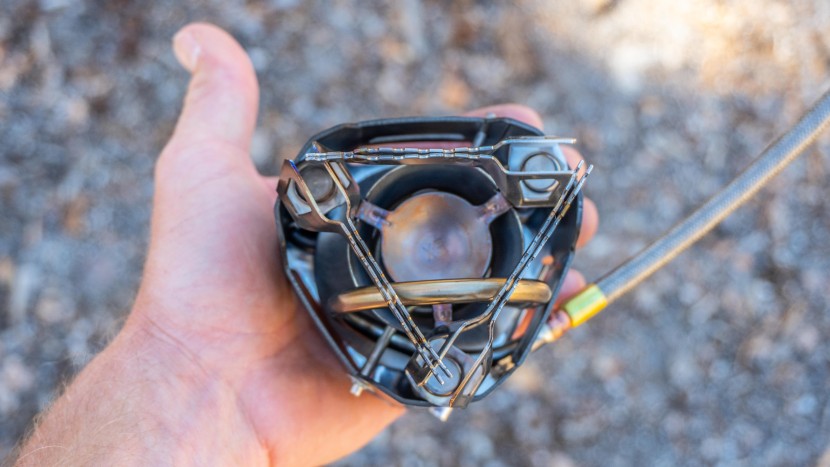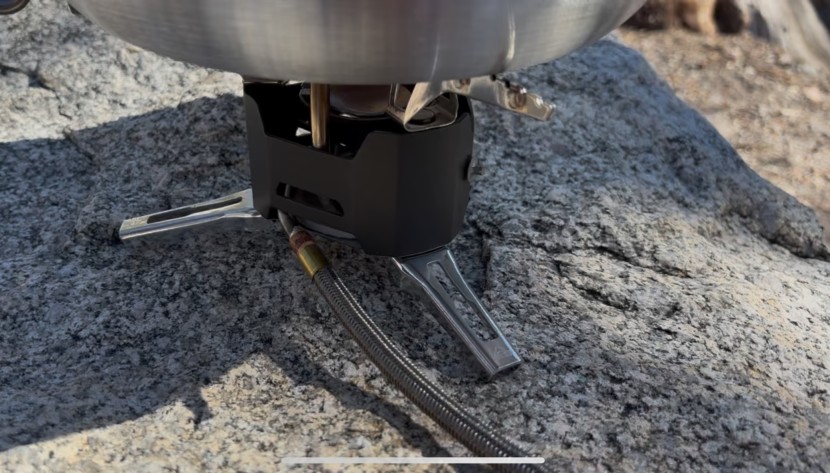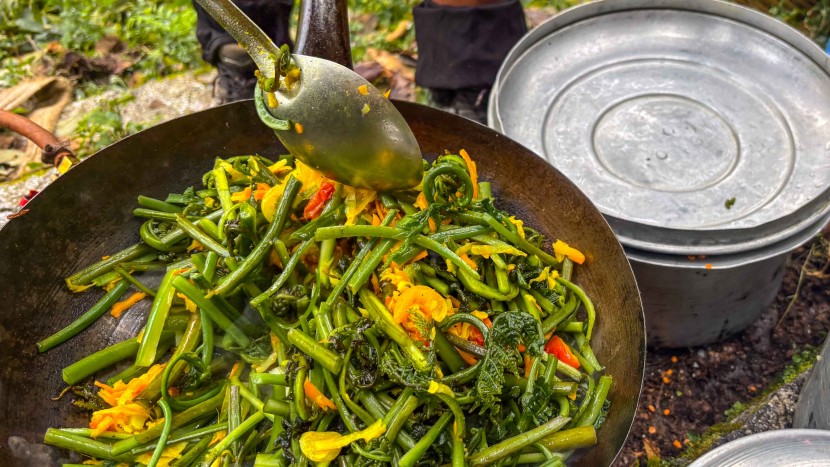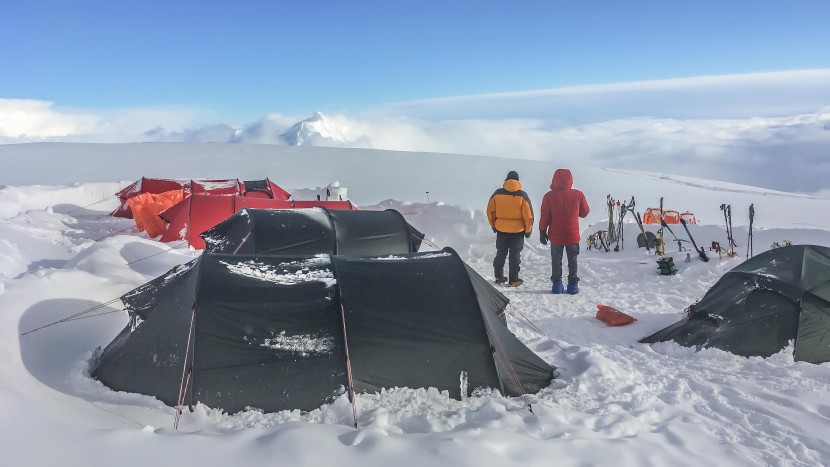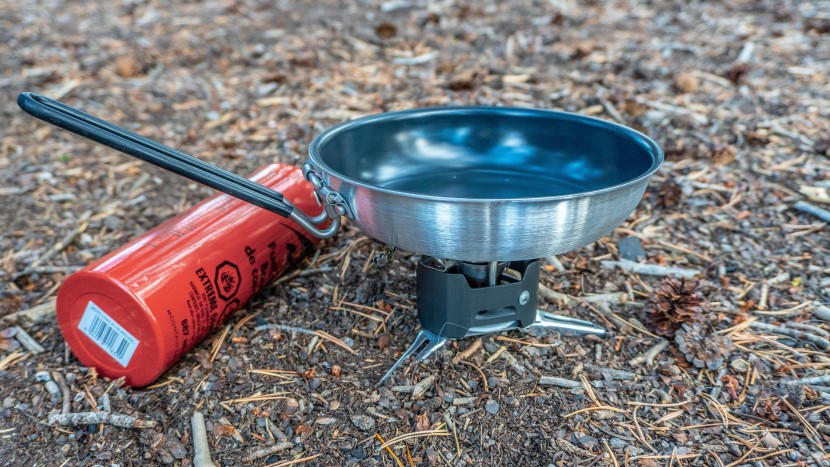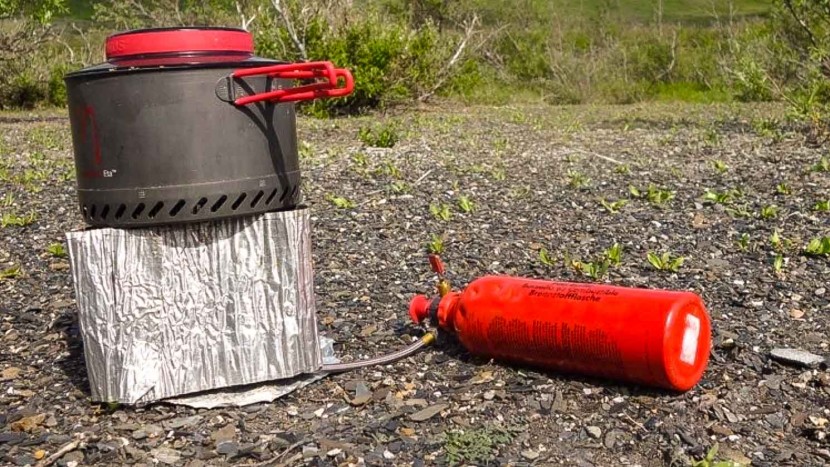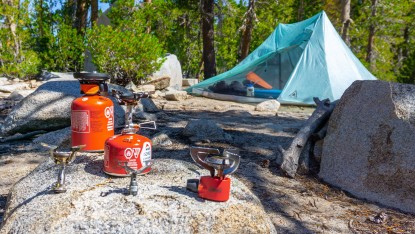
Our Verdict
Our Analysis and Test Results
There are few backpacking stoves that have as much heat output as the MSR XGK EX, roaring dependably for weeks on end. From the Alaska Range to the Himalayas, this stove has proven itself again and again as a quintessential expedition companion.
Fuel Efficiency
The XGK is a fairly fuel-efficient model despite its high output. Where it stood out in this metric was the consistent efficiency when the weather got moody and the winds started blowing.
At approximately .34 ounces of fuel per boil in our lab testing, the XGK is somewhat efficient, though there are several models that offer impressively low scores that use half the amount of fuel per boil. However, these same high-performing models don't handle the altitude or cold as well as the XGK, making the overall fuel efficiency of this stove excellent for its intended environments, which greatly boosted its score in this metric.
Weight
At a clunky 15.2 ounces (and 18.2 with our titanium pot and lid), the XGK isn't taking home any blue ribbons for its low weight, but context is crucial when looking at a backpacking stove's stats. For long trips and cold-weather expeditions, the metal housing of the XGK and its robust jet design is a debatably necessary evil so that it doesn't malfunction when a group's survival depends on its functionality.
Liquid gas stoves require a heavier fuel bottle and a pump, which also adds some weight to the XGK system. We also highly suggest using MSR's cold-weather-specific pump, with improved seals that make leaks less likely, though this fortunately doesn't weigh much more than the standard fuel pumps. While the support legs of the XGK aren't the lightest, we loved their reliability, even with fully-loaded cookware. At the end of the day, our weight gripes are minimal when you consider the value of that weight — superior durability and consistency compared to the featherweight competition.
Simmering Ability
As is common with higher-powered models, this stove is essentially either on or off, making for a particularly difficult stove to cook with. Fortunately, we've spent years tinkering with ways to keep a skillet further above the stove to allow for slow-cooked meals, but the XGK still fell further back in scoring.
In cold environments, we were able to easily boil noodles with a slightly larger pot allowing for minimal overflow, but if using a typical small backcountry pot, we ran into the same issues as other “boil-only” stoves with water bubbling immediately over the pot's brim.
When using a skillet, we had some success with cooking veggies or meat that was positioned away from the burner on the pan, but this requires the utmost attention to avoid burning the food. However, we were able to use stove wires to keep the pan further away from the flame, and for quicker meals, simply holding the pan higher up was functional as well. With heavier cookware, which is common on expeditions, we were able to cook veggies and meats much more easily, as long as we kept the spatula moving.
Wind Resistance
There are few liquid gas stoves, at least portable ones, as wind-resistant as the XGK EX. While this doesn't offer much shelter from the flames, its jet-force burner stayed lit reliably through some fierce windstorms, though it's still best to use a cook tent of some sort during expeditions.
We were simply impressed by the stable flames of the XGK, and we never had the flame get extinguished during our testing process. It is important to note that any of these liquid fuel stoves require priming, which involves lighting a bit of liquid fuel in a small pan under the stove. Unfortunately, this part of the process was much more susceptible to wind, but once the main burner is primed, the XGK is a formidable opponent to blustery days. We found modeset fuel efficiency reduction, and otherwise were able to carry out our cooking needs as usual.
Ease Of Use
As previously mentioned, this liquid gas stove requires priming before use, knocking the XGK further back in the pack. However, its unwavering reliability is a true standout quality, and its pot stability is world-class.
This stove handled full-sized cookware better than any other stove in our lineup, with generously sized stainless steel legs boasting best-in-class stability. Even with a full pot of water, the XGK handled the weight with ease, just make sure it's on level ground or snow. We found an average boil time of about 3 minutes and 10 seconds throughout testing for .5 liters. We were also huge fans of the field-repairability of this stove, while isobutane stoves rarely are able to be fixed in the backcountry.
One of the most substantial issues we ran into was the noise of the XGK. It might sound silly, but this is truly a loud stove that can make it hard to have a conversation with your camping partner just a few feet away. This nuisance is minor, of course, but it's worth keeping in mind before you commit to purchasing this. Last, but not least, we found the XGK to burn cleaner than the MSR Whisperlite or Whisperlite International, requiring less cleaning and more consistent burns throughout expeditions.
Should You Buy the MSR XGK EX?
This is a very specific liquid gas stove that's best for adventurers headed to cold and snowy places. We've found that expeditions require multiple stoves, for redundancy and variety of uses, but the XGK EX is the best model for a primary workhorse stove. We love how clean it burns and how dependable it is, even when the weather goes south.
What Other Backpacking Stoves Should You Consider?
If you want a liquid fuel stove that's a bit more versatile and less heavy duty, consider the MSR Whisperlite Universal, which can simmer at least slightly better and can even be used with isobutane canisters if needed. If you're looking for an integrated canister stove that can handle extreme conditions, take a look at the MSR Reactor. If you're just looking for a basic canister stove, our favorite overall is the Soto Windmaster.



